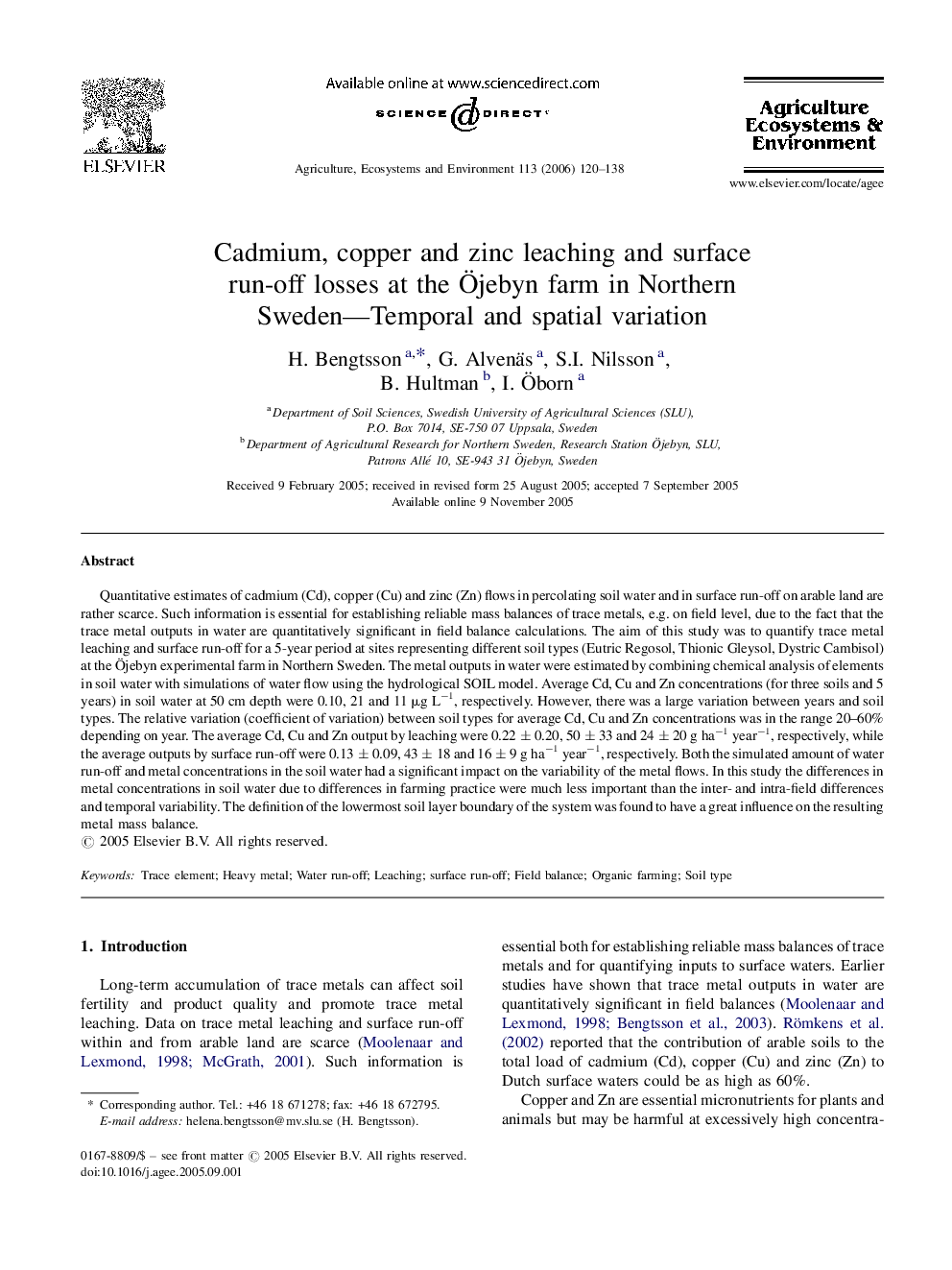| کد مقاله | کد نشریه | سال انتشار | مقاله انگلیسی | نسخه تمام متن |
|---|---|---|---|---|
| 2415962 | 1552150 | 2006 | 19 صفحه PDF | دانلود رایگان |

Quantitative estimates of cadmium (Cd), copper (Cu) and zinc (Zn) flows in percolating soil water and in surface run-off on arable land are rather scarce. Such information is essential for establishing reliable mass balances of trace metals, e.g. on field level, due to the fact that the trace metal outputs in water are quantitatively significant in field balance calculations. The aim of this study was to quantify trace metal leaching and surface run-off for a 5-year period at sites representing different soil types (Eutric Regosol, Thionic Gleysol, Dystric Cambisol) at the Öjebyn experimental farm in Northern Sweden. The metal outputs in water were estimated by combining chemical analysis of elements in soil water with simulations of water flow using the hydrological SOIL model. Average Cd, Cu and Zn concentrations (for three soils and 5 years) in soil water at 50 cm depth were 0.10, 21 and 11 μg L−1, respectively. However, there was a large variation between years and soil types. The relative variation (coefficient of variation) between soil types for average Cd, Cu and Zn concentrations was in the range 20–60% depending on year. The average Cd, Cu and Zn output by leaching were 0.22 ± 0.20, 50 ± 33 and 24 ± 20 g ha−1 year−1, respectively, while the average outputs by surface run-off were 0.13 ± 0.09, 43 ± 18 and 16 ± 9 g ha−1 year−1, respectively. Both the simulated amount of water run-off and metal concentrations in the soil water had a significant impact on the variability of the metal flows. In this study the differences in metal concentrations in soil water due to differences in farming practice were much less important than the inter- and intra-field differences and temporal variability. The definition of the lowermost soil layer boundary of the system was found to have a great influence on the resulting metal mass balance.
Journal: Agriculture, Ecosystems & Environment - Volume 113, Issues 1–4, April 2006, Pages 120–138